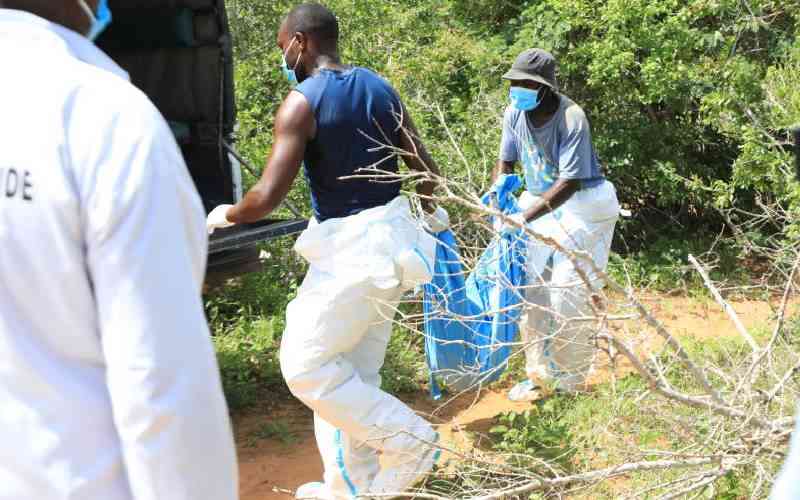By Francis Ontomwa
He moves up and down in a small dark room, emptying shelves and changing leaves for thousands of silkworms being reared in the space.
Vincent Chimwani opens and closes windows at intervals — to regulate temperatures in the room, he says.
Chimwani is part of a 15-member group that includes youths and women that run a sericulture project in Iguhu village of Ikolomani constituency in Kakamega South District.
Sericulture is the harvesting of silk.The project requires little capital to start and little space.
To many, what started as an ‘over-ambitious’ project whose future looked bleak and ‘mysterious’ given that clothes were to come out of caterpillars, has now turned out to be one of Ikolomani residents’ most respected business ventures.
It has stirred interest even among those who once looked down upon it.
“We started off many of us but with time, the number dwindled as many expected to reap the benefits immediately,” explains Emily Bunoro, the group’s leader.
She adds: “Slowly things are starting to pay off and we are now witnessing many showing interest to join us again.”
In a small isolated muddy house in the village, the group has set up a structure made of shelves that resemble a double-decker bed where they rear silkworms.
These crawling insects produce raw silk — and the farmers’ income. Just a few metres from the structure is a small farm teeming with mulberry trees.
The silkworms feed solely on the succulent leaves of the tree, one that produces strawberry and therefore their availability must be guaranteed if the project is to be sustained. “We continuously feed the worms at least thrice a day but if we fail to do so, they die,” explains Chimwani.
The group buys the worms from the International Centre of Insect Physiology and Ecology (Icipe) Nairobi through the assistance of the Kenya Forestry Service office in the district.
Pricey silk
Silkworms, which are offsprings of moths, produce their pricey silk, by spewing out thread from tiny holes in their jaws, which they use to spin into their cocoons. The whole process takes just 72 hours and within that time they produce between 500-1,200 silken threads.
Stay informed. Subscribe to our newsletter
“The worms are amazing, they can do wonders as far as silk production is concerned. All they need is to be frequently fed and given the appropriate temperatures conditions — between 26 and 27 degrees,” explains Herbert Amiani, the district Forestry officer.
It is documented that the Chinese unearthed the silkworm’s secret, and were the first to spin the silkworm’s threads into cloth.
They kept this covert, top-secret operation, from the rest of the world by imposing death sentence upon those who smuggled the worm and/or its eggs out of China. Eventually, however, the secret was out, and silkworms are now farmed for their silk, in other countries including some African states. Farmers harness the power of the silkworm through a tedious, labour-intensive, time-consuming process.
In Kenya, sericulture is not common and only a few places do the farming, says Amiani.
Farmworkers painstakingly place the eggs upon strips of paper or cloth (not made of silk), until when the incubated eggs hatch, and the tiny, black worms emerge.
The worms are then put in trays filled with the worm’s favourite fodder of finely chopped, white mulberry leaves. After about six weeks, the satiated worms begin to spin cocoons.
Once done, the farmer snatches the cocoon to prevent the shrunken chrysalis, carefully encased inside, from hatching into a moth in 12 days.
The silk farmers harvest silk yarns from the cocoons immediately, with one producing a strand of silk that can cover the length of 12 football fields.
The women in the group produce useable yarns by hand-reeling the threads onto a wooden spindle to produce a uniform strand of raw silk yarn.
The process can take 30 to 40 hours to produce a half-kilo of silk yarn.
A reeling machine does this faster. Through a World Bank grant, the group acquired a silk churning machine worth more than Sh1 million which is set to help facilitate the final production.
 The Standard Group Plc is a
multi-media organization with investments in media platforms spanning newspaper
print operations, television, radio broadcasting, digital and online services. The
Standard Group is recognized as a leading multi-media house in Kenya with a key
influence in matters of national and international interest.
The Standard Group Plc is a
multi-media organization with investments in media platforms spanning newspaper
print operations, television, radio broadcasting, digital and online services. The
Standard Group is recognized as a leading multi-media house in Kenya with a key
influence in matters of national and international interest.
 The Standard Group Plc is a
multi-media organization with investments in media platforms spanning newspaper
print operations, television, radio broadcasting, digital and online services. The
Standard Group is recognized as a leading multi-media house in Kenya with a key
influence in matters of national and international interest.
The Standard Group Plc is a
multi-media organization with investments in media platforms spanning newspaper
print operations, television, radio broadcasting, digital and online services. The
Standard Group is recognized as a leading multi-media house in Kenya with a key
influence in matters of national and international interest.




